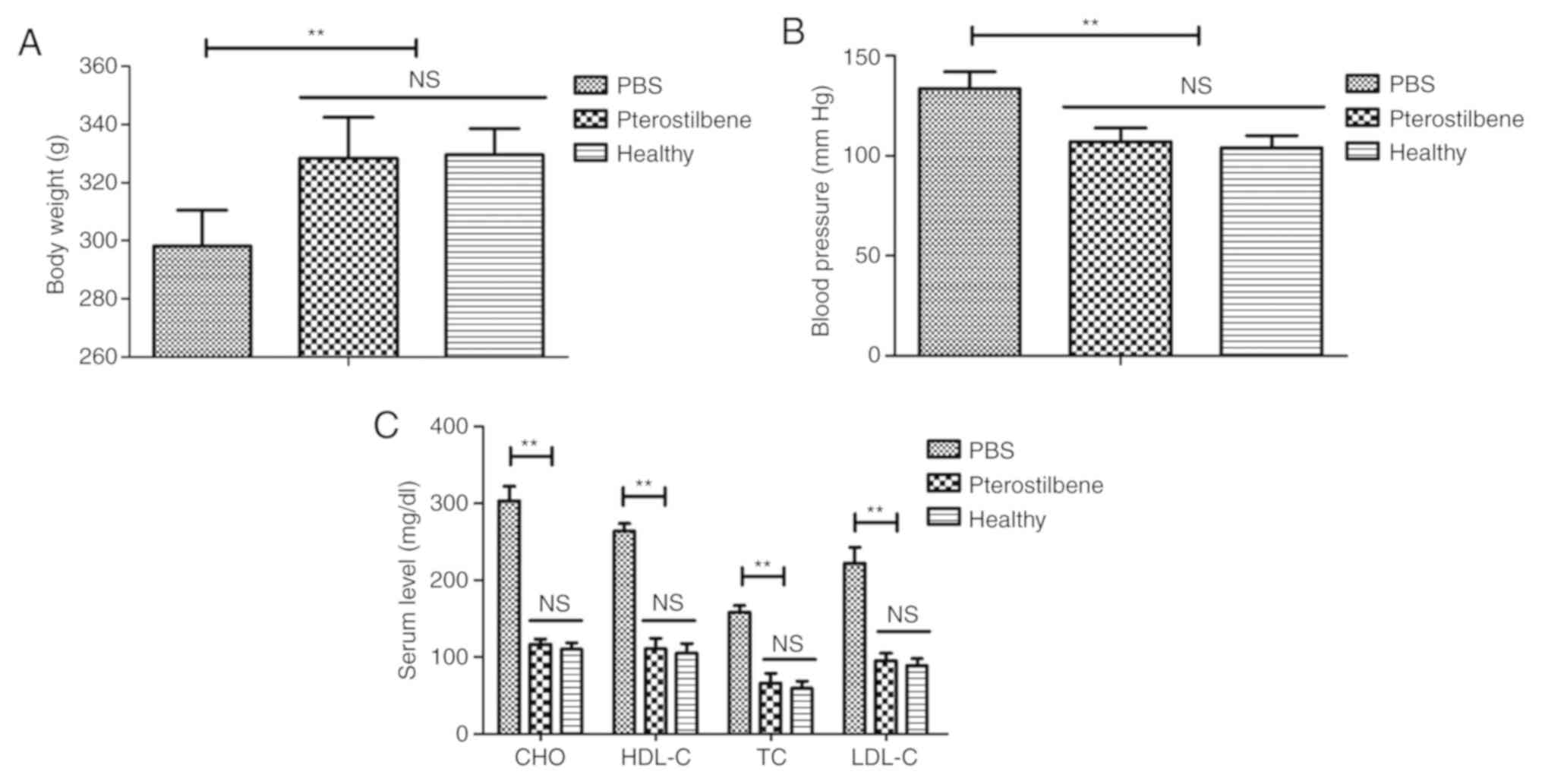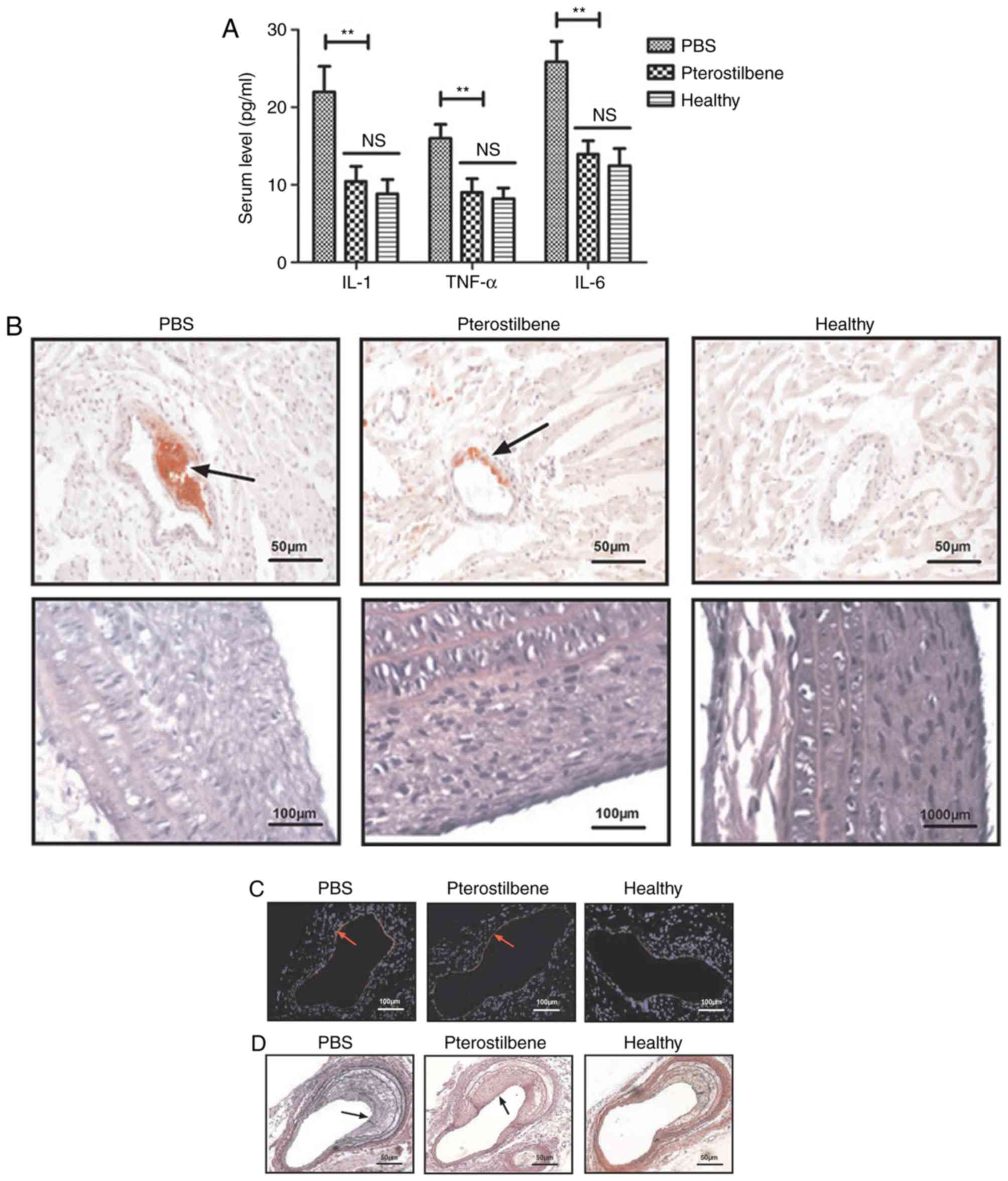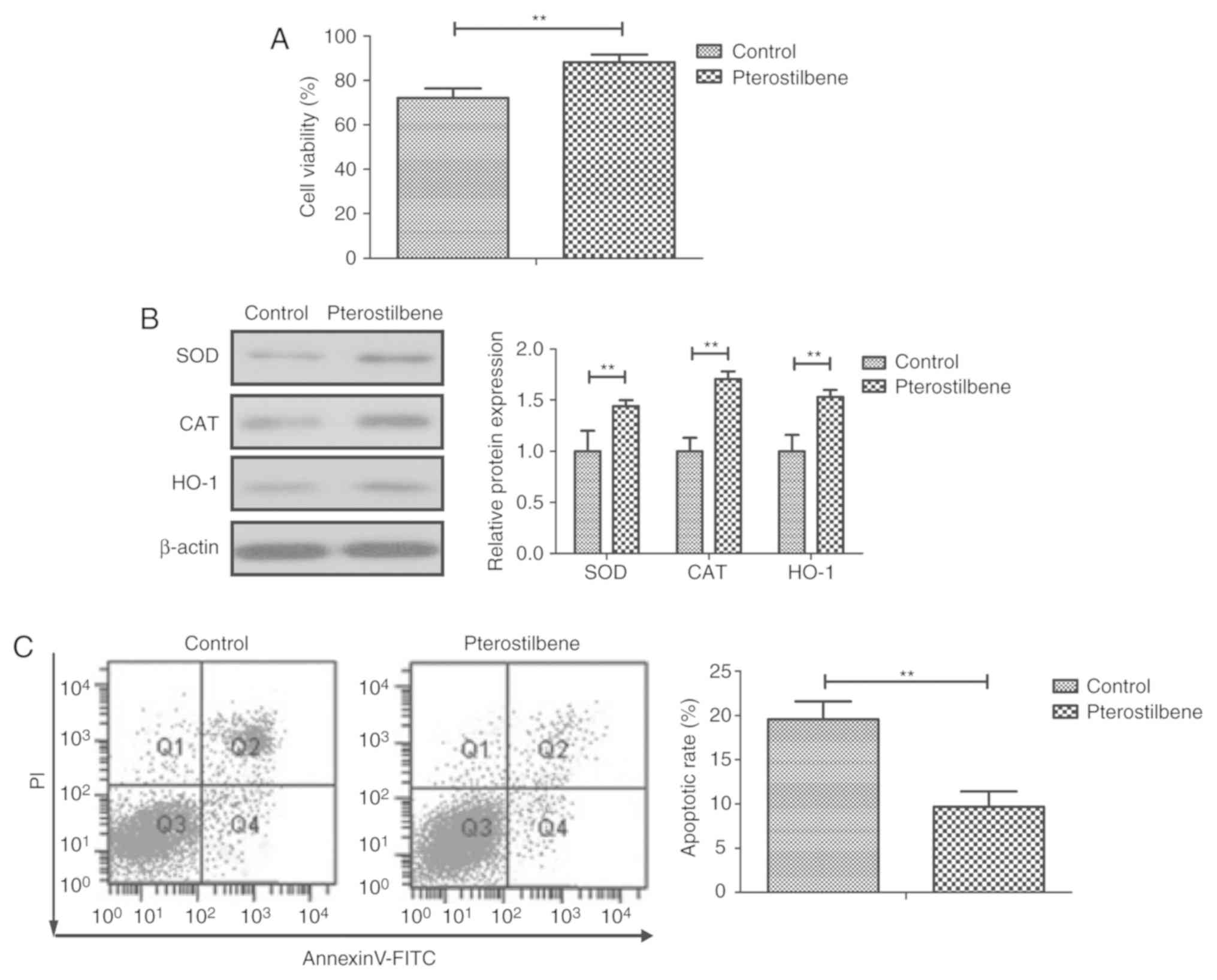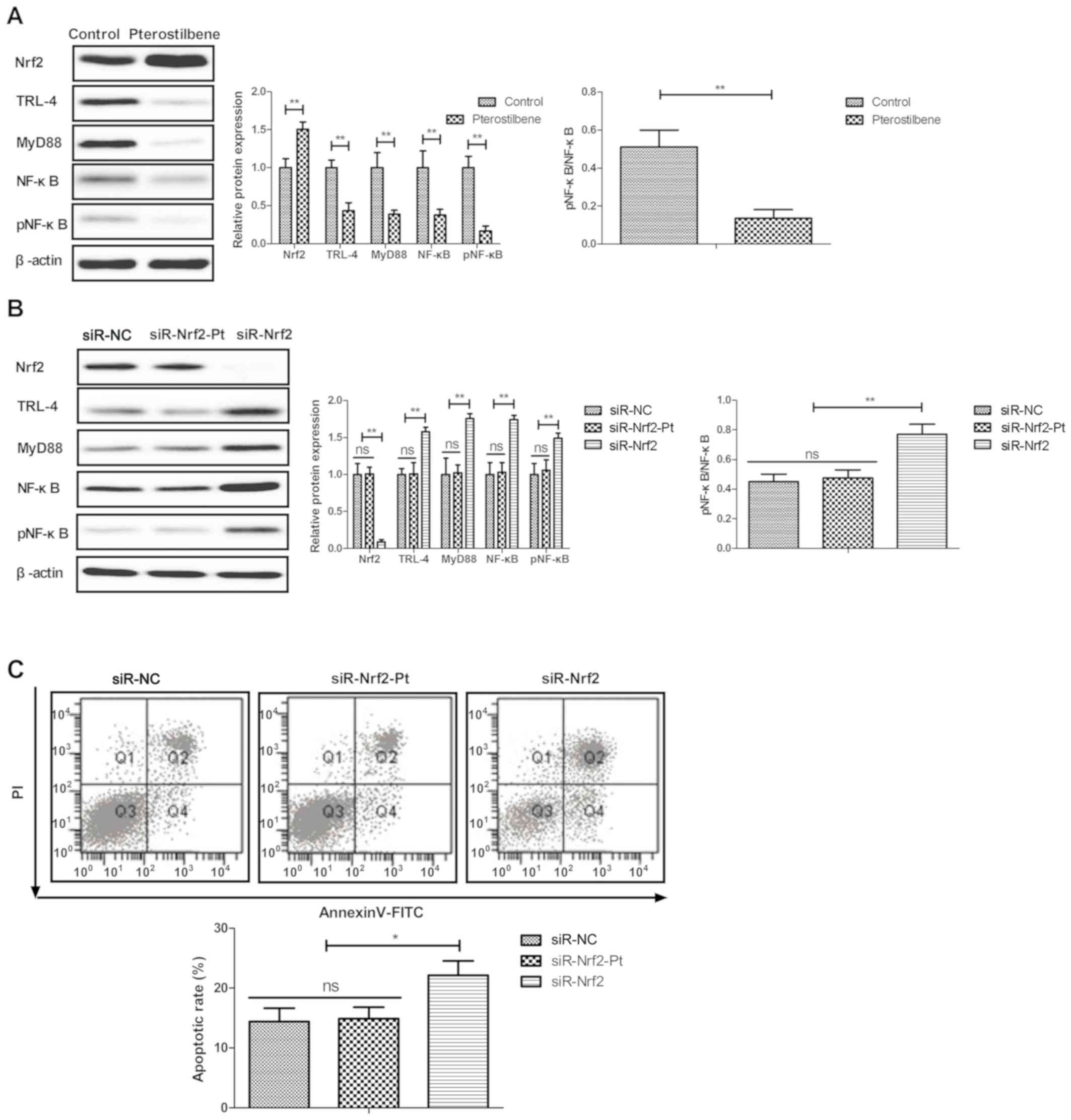|
1
|
Yahagi K, Kolodgie FD, Lutter C, Mori H,
Romero ME, Finn AV and Virmani R: Pathology of human coronary and
carotid artery atherosclerosis and vascular calcification in
diabetes mellitus. Arterioscler Thromb Vasc Biol. 37:191–204.
2017.PubMed/NCBI View Article : Google Scholar
|
|
2
|
Otsuka F, Yasuda S, Noguchi T and
Ishibashi-Ueda H: Pathology of coronary atherosclerosis and
thrombosis. Cardiovasc Diagn Ther. 6:396–408. 2016.PubMed/NCBI View Article : Google Scholar
|
|
3
|
Watson SR and Lessner SM: (Second)
harmonic disharmony: Nonlinear microscopy shines new light on the
pathology of atherosclerosis. Microsc Microanal. 22:589–598.
2016.PubMed/NCBI View Article : Google Scholar
|
|
4
|
Yamada S, Senokuchi T, Matsumura T, Morita
Y, Ishii N, Fukuda K, Murakami-Nishida S, Nishida S, Kawasaki S,
Motoshima H, et al: Inhibition of local macrophage growth
ameliorates focal inflammation and suppresses atherosclerosis.
Arterioscler Thromb Vasc Biol. 38:994–1006. 2018.PubMed/NCBI View Article : Google Scholar
|
|
5
|
Martin-Lorenzo M, Balluff B, Maroto AS,
Carreira RJ, van Zeijl RJ, Gonzalez-Calero L, de la Cuesta F,
Barderas MG, Lopez-Almodovar LF, Padial LR, et al: Molecular
anatomy of ascending aorta in atherosclerosis by MS Imaging:
Specific lipid and protein patterns reflect pathology. J
Proteomics. 126:245–251. 2015.PubMed/NCBI View Article : Google Scholar
|
|
6
|
Otsuka F, Kramer MC, Woudstra P, Yahagi K,
Ladich E, Finn AV, de Winter RJ, Kolodgie FD, Wight TN, Davis HR,
et al: Natural progression of atherosclerosis from pathologic
intimal thickening to late fibroatheroma in human coronary
arteries: A pathology study. Atherosclerosis. 241:772–782.
2015.PubMed/NCBI View Article : Google Scholar
|
|
7
|
Turan TN, Rumboldt Z, Granholm AC, Columbo
L, Welsh CT, Lopes-Virella MF, Spampinato MV and Brown TR:
Intracranial atherosclerosis: Correlation between in-vivo 3T high
resolution MRI and pathology. Atherosclerosis. 237:460–463.
2014.PubMed/NCBI View Article : Google Scholar
|
|
8
|
Ding L, Hong Y and Peng B: Association
between large artery atherosclerosis and cerebral microbleeds: A
systematic review and meta-analysis. Stroke Vasc Neurol. 2:7–14.
2017.PubMed/NCBI View Article : Google Scholar
|
|
9
|
Henrot P, Foret J, Barnetche T, Lazaro E,
Duffau P, Seneschal J, Schaeverbeke T, Truchetet ME and Richez C:
Assessment of subclinical atherosclerosis in systemic lupus
erythematosus: A systematic review and meta-analysis. Joint Bone
Spine. 85:155–163. 2018.PubMed/NCBI View Article : Google Scholar
|
|
10
|
Hsu E and Parthasarathy S:
Anti-inflammatory and antioxidant effects of sesame oil on
atherosclerosis: A descriptive literature review. Cureus.
9(e1438)2017.PubMed/NCBI View Article : Google Scholar
|
|
11
|
Nirwane A and Majumdar A: Resveratrol and
pterostilbene attenuated smokeless tobacco induced cardiovascular
aberrations in estrogen deficient female rats. Toxicol Res (Camb).
5:1604–1618. 2016.PubMed/NCBI View Article : Google Scholar
|
|
12
|
Zhang Y: Pterostilbene, a novel natural
plant conduct, inhibits high fat-induced atherosclerosis
inflammation via NF-κB signaling pathway in Toll-like receptor 5
(TLR5) deficient mice. Biomed Pharmacother. 81:345–355.
2016.PubMed/NCBI View Article : Google Scholar
|
|
13
|
Gao D, Jing S, Zhang Q and Wu G:
Pterostilbene protects against acute renal ischemia reperfusion
injury and inhibits oxidative stress, inducible nitric oxide
synthase expression and inflammation in rats via the Toll-like
receptor 4/nuclear factor-κB signaling pathway. Exp Ther Med.
15:1029–1035. 2018.PubMed/NCBI View Article : Google Scholar
|
|
14
|
Li M, Qian M, Kyler K and Xu J:
Endothelial-vascular smooth muscle cells interactions in
atherosclerosis. Front Cardiovasc Med. 5(151)2018.PubMed/NCBI View Article : Google Scholar
|
|
15
|
Verma I, Syngle A, Krishan P and Garg N:
Endothelial progenitor cells as a marker of endothelial dysfunction
and atherosclerosis in ankylosing spondylitis: A cross-sectional
study. Int J Angiol. 26:36–42. 2017.PubMed/NCBI View Article : Google Scholar
|
|
16
|
Profumo E, Buttari B, D'Arcangelo D,
Tinaburri L, Dettori MA, Fabbri D, Delogu G and Riganò R: The
nutraceutical dehydrozingerone and its dimer counteract
inflammation- and oxidative stress-induced dysfunction of in vitro
cultured human endothelial cells: A novel perspective for the
prevention and therapy of atherosclerosis. Oxid Med Cell Longev.
2016(1246485)2016.PubMed/NCBI View Article : Google Scholar
|
|
17
|
Zhang T, Hu Q, Shi L, Qin L, Zhang Q and
Mi M: Equol attenuates atherosclerosis in apolipoprotein
E-deficient mice by inhibiting endoplasmic reticulum stress via
activation of Nrf2 in endothelial cells. PLoS One.
11(e0167020)2016.PubMed/NCBI View Article : Google Scholar
|
|
18
|
Liu H, Zhang G, Huang J, Ma S, Mi K, Cheng
J, Zhu Y, Zha X and Huang W: Atractylenolide I modulates ovarian
cancer cell-mediated immunosuppression by blocking MD-2/TLR4
complex-mediated MyD88/NF-κB signaling in vitro. J Transl Med.
14(104)2016.PubMed/NCBI View Article : Google Scholar
|
|
19
|
Vijayan V, Khandelwal M, Manglani K, Gupta
S and Surolia A: Methionine down-regulates TLR4/MyD88/NF-κB
signalling in osteoclast precursors to reduce bone loss during
osteoporosis. Br J Pharmacol. 171:107–121. 2014.PubMed/NCBI View Article : Google Scholar
|
|
20
|
Ding F, Li F, Li Y, Hou X, Ma Y, Zhang N,
Ma J, Zhang R, Lang B, Wang H and Wang Y: HSP60 mediates the
neuroprotective effects of curcumin by suppressing microglial
activation. Exp Ther Med. 12:823–828. 2016.PubMed/NCBI View Article : Google Scholar
|
|
21
|
Qi M, Zheng L, Qi Y, Han X, Xu Y, Xu L,
Yin L, Wang C, Zhao Y, Sun H, et al: Dioscin attenuates renal
ischemia/reperfusion injury by inhibiting the TLR4/MyD88 signaling
pathway via up-regulation of HSP70. Pharmacol Res. 100:341–352.
2015.PubMed/NCBI View Article : Google Scholar
|
|
22
|
Liu M, Xu Y, Han X, Yin L, Xu L, Qi Y,
Zhao Y, Liu K and Peng J: Dioscin alleviates alcoholic liver
fibrosis by attenuating hepatic stellate cell activation via the
TLR4/MyD88/NF-κB signaling pathway. Sci Rep.
5(18038)2015.PubMed/NCBI View Article : Google Scholar
|
|
23
|
Yao H, Hu C, Yin L, Tao X, Xu L, Qi Y, Han
X, Xu Y, Zhao Y, Wang C and Peng J: Dioscin reduces
lipopolysaccharide-induced inflammatory liver injury via regulating
TLR4/MyD88 signal pathway. Int Immunopharmacol. 36:132–141.
2016.PubMed/NCBI View Article : Google Scholar
|
|
24
|
Qi M, Yin L, Xu L, Tao X, Qi Y, Han X,
Wang C, Xu Y, Sun H, Liu K and Peng J: Dioscin alleviates
lipopolysaccharide-induced inflammatory kidney injury via the
microRNA let-7i/TLR4/MyD88 signaling pathway. Pharmacol Res.
111:509–522. 2016.PubMed/NCBI View Article : Google Scholar
|
|
25
|
Sandberg K and Umans JG: Recommendations
concerning the new U.S. National Institutes of Health initiative to
balance the sex of cells and animals in preclinical research. FASEB
J. 29:1646–1652. 2015.PubMed/NCBI View Article : Google Scholar
|
|
26
|
Gao M, Xin G, Qiu X, Wang Y and Liu G:
Establishment of a rat model with diet-induced coronary
atherosclerosis. J Biomed Res. 31:47–55. 2016.PubMed/NCBI View Article : Google Scholar
|
|
27
|
Wei DH, Jia XY, Liu YH, Guo FX, Tang ZH,
Li XH, Wang Z, Liu LS, Wang GX, Jian ZS and Ruan CG: Cathepsin L
stimulates autophagy and inhibits apoptosis of ox-LDL-induced
endothelial cells: Potential role in atherosclerosis. Int J Mol
Med. 31:400–406. 2013.PubMed/NCBI View Article : Google Scholar
|
|
28
|
Parolin M, Dassie F, Martini C, Mioni R,
Russo L, Fallo F, Rossato M, Vettor R, Maffei P and Pagano C:
Preclinical markers of atherosclerosis in acromegaly: A systematic
review and meta-analysis. Pituitary. 21:653–662. 2018.PubMed/NCBI View Article : Google Scholar
|
|
29
|
Song P, Xia W, Zhu Y, Wang M, Chang X, Jin
S, Wang J and An L: Prevalence of carotid atherosclerosis and
carotid plaque in Chinese adults: A systematic review and
meta-regression analysis. Atherosclerosis. 276:67–73.
2018.PubMed/NCBI View Article : Google Scholar
|
|
30
|
Stachyra K, Kiepura A and Olszanecki R:
Air pollution and atherosclerosis-a brief review of mechanistic
links between atherogenesis and biological actions of inorganic
part of particulate matter. Folia Med Cracov. 57:37–46.
2017.PubMed/NCBI
|
|
31
|
Seo YJ, Kim KJ, Koh EJ, Choi J and Lee BY:
Anti-adipogenesis mechanism of pterostilbene through the activation
of heme oxygenase-1 in 3T3-L1 cells. Phytomedicine. 33:7–13.
2017.PubMed/NCBI View Article : Google Scholar
|
|
32
|
Kosuru R, Kandula V, Rai U, Prakash S, Xia
Z and Singh S: Pterostilbene decreases cardiac oxidative stress and
inflammation via activation of AMPK/Nrf2/HO-1 pathway in
fructose-fed diabetic rats. Cardiovasc Drugs Ther. 32:147–163.
2018.PubMed/NCBI View Article : Google Scholar
|
|
33
|
Chen ZW, Miu HF, Wang HP, Wu ZN, Wang WJ,
Ling YJ, Xu XH, Sun HJ and Jiang X: Pterostilbene protects against
uraemia serum-induced endothelial cell damage via activation of
Keap1/Nrf2/HO-1 signaling. Int Urol Nephrol. 50:559–570.
2018.PubMed/NCBI View Article : Google Scholar
|
|
34
|
Gao W, Liu H, Yuan J, Wu C, Huang D, Ma Y,
Zhu J, Ma L, Guo J, Shi H, et al: Exosomes derived from mature
dendritic cells increase endothelial inflammation and
atherosclerosis via membrane TNF-α mediated NF-κB pathway. J Cell
Mol Med. 20:2318–2327. 2016.PubMed/NCBI View Article : Google Scholar
|
|
35
|
Hosseini H, Li Y, Kanellakis P, Tay C, Cao
A, Liu E, Peter K, Tipping P, Toh BH, Bobik A and Kyaw T: Toll-like
receptor (TLR)4 and MyD88 are essential for atheroprotection by
peritoneal B1a B cells. J Am Heart Assoc. 5(e002947)2016.PubMed/NCBI View Article : Google Scholar
|
|
36
|
Yin J, Wang H and Lu G: Umbelliferone
alleviates hepatic injury in diabetic Db/Db mice via inhibiting
inflammatory response and activating Nrf2-mediated antioxidant.
Biosci Rep. 38(BSR20180444)2018.PubMed/NCBI View Article : Google Scholar
|
|
37
|
Kong X, Thimmulappa R, Craciun F, Harvey
C, Singh A, Kombairaju P, Reddy SP, Remick D and Biswal S:
Enhancing Nrf2 pathway by disruption of Keap1 in myeloid leukocytes
protects against sepsis. Am J Respir Crit Care Med. 184:928–938.
2011.PubMed/NCBI View Article : Google Scholar
|



















